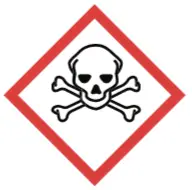Written by J.A Dobado | Last Updated on April 22, 2024
Objective
To produce a derivative of uridine and use chromatographic techniques for their identification and isolation.

Background
Recent advances in the pharmaceutical industry have increased interest in the chemistry of nucleic acids for example, the synthesis of AZT (3′-azido-2′,3′-dideoxythymidine) used in treating AIDS. Furthermore, the multistep synthesis of these products requires the application of various chromatographic techniques to ensure the isolation and characterization of these products. Also these products are well characterized in the literature spectroscopically.
The proposed synthesis starts with uridine, which is first converted into its derivative dibutylstannylene to activate the secondary positions of the nucleoside. This is then treated with methyl iodide, which is used for the methylation of the 2′ and 3′ positions of the nucleoside. Finally, the methylated nucleosides are tritilated at the 5′ position in order to facilitate the isolation and purification by chromatography. This last step can be avoided to shorten the experiment.
Experimental procedure
A) 2′,3′-O-(Dibutylestanilen)uridine (1):
In a 250 ml round-bottom flask, add 100 ml of anhydrous MeOH and then carefully add uridine (1.488 mg, 2 mmol) and dibutyltin oxide (500 mg, 2 mmol). Heat the solution to reflux for 1 h, and then evaporate to dryness using a rotary evaporator. Store the resulting white powdery residue overnight at r.t. under an inert atmosphere, and use in the next step without further manipulation.
B) 2′-O-Methyluridine and 3′-O-methyluridine (2 and 3):
Using a cannula, add 30 ml of anhydrous DMF to the flask from the previous step, and later with a syringe add 4 ml (64 mmol) of methyl iodide. The reaction is maintained at 40 ºC under an inert atmosphere overnight.
| DANGER! Conduct the experiment in a fume hood because of the dangers of methyl iodide (CH3I).” |
C) 5′-O-Dimethoxytrityl-2′-O-methyluridine and 5′-O-dimethoxytrityl-3′-O-methyluridine (4 and 5):
Evaporate the solution in a rotary evaporator until a gummy residue remains. The mixture can be characterized by TLC in ethyl acetate/MeOH (4:1) to give about Rf 0.60, 0.68, and 0.56, for products 1, 2, and 3, respectively, or CH2Cl2/MeOH/triethylamine (96:3:1), and in this case the values would be 0.05, 0.17, and 0.14.
To the gummy residue from the previous step, add 50 ml of anhydrous pyridine and evaporate to dryness in a rotary evaporator. Add back another 50 ml of anhydrous pyridine and then DMT-Cl (0.75 g, 2.2 mmol) (4,4′-Dimethoxytrityl chloride). Stir the mixture at r.t. under an inert atmosphere for 2 h. The progress of the reaction can be followed by TLC, taking care to elute first with diethyl ether to drag pyridine and subsequently with ethyl acetate/triethylamine (99:1). Under these conditions, 2 and 3 have an Rf of 0.06, while 4 and 5 have 0.48 and 0.36, respectively. When the reaction is complete, evaporate the solution to dryness, giving a syrup, which is resolved into its components by CC with CH2Cl2/triethylamine (99:1). Monitor the fractions as indicated above.
Physico-chemical properties
This table collects data for the molecular weight (Mw), melting point (M.p.) boiling point (B.p.) and density of the reactives and compounds used in this laboratory experiment.
| Name | Mw (g/mol) | M.p. (ºC) | B.p. (ºC) | Density (g/ml) |
| 4,4'-dimethoxytrityl chloride (DMT-Cl) | 338.83 | 119-123 | - | - |
| CH3I | 141.94 | -64 | 41-43 | 2.280 |
| Dibutyltin(IV) oxide | 248.94 | 300 | - | 1.580 |
| DMF | ||||
| MeOH | 32.04 | -98 | 64.7 | 0.791 |
| Pyridine | 79.10 | -42 | 115 | 0.978 |
| Uridine | 244.20 | 163-167 | - | - |
GHS pictograms
Hazard pictograms form part of the international Globally Harmonized System of Classification and Labelling of Chemicals (GHS) and are collected in the followinf Table for the chemical compounds used in this experiment.
| Name | GHS |
| 4,4'-dimethoxytrityl chloride (DMT-Cl) | Non-hazardous |
| CH3I |   |
| Dibutyltin(IV) oxide |     |
| DMF |    |
| MeOH |    |
| Pyridine |   |
| Uridine | Non-hazardous |
International Chemical Identifier
The IUPAC InChI key identifiers for the main compounds used in this experiment are provided to facilitate the nomenclature and formulation of chemical compounds and the search for information on the Internet for these compounds.
| 4,4'-dimethoxytrityl chloride (DMT-Cl) | JBWYRBLDOOOJEU-UHFFFAOYSA-N |
| CH3I | INQOMBQAUSQDDS-UHFFFAOYSA-N |
| Dibutyltin(IV) oxide | JGFBRKRYDCGYKD-UHFFFAOYSA-N |
| DMF | ZMXDDKWLCZADIW-UHFFFAOYSA-N |
| MeOH | OKKJLVBELUTLKV-UHFFFAOYSA-N |
| Pyridine | JUJWROOIHBZHMG-UHFFFAOYSA-N |
| Uridine | DRTQHJPVMGBUCF-XVFCMESISA-N |